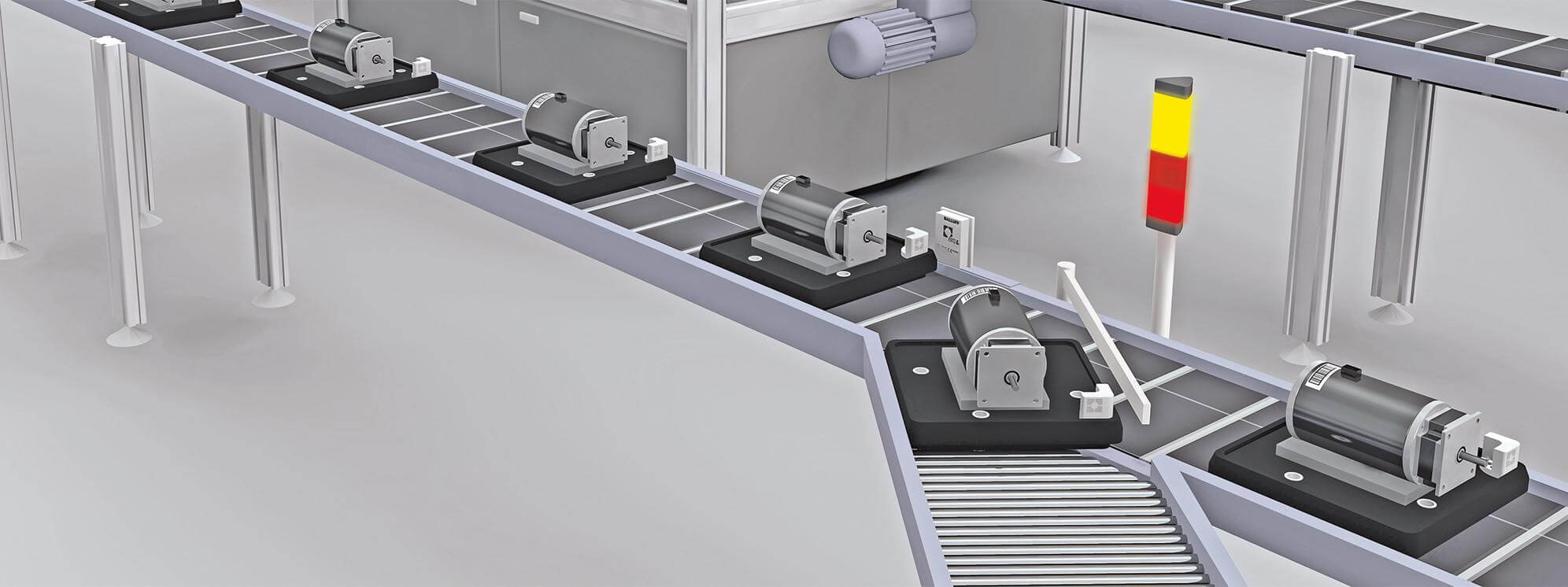Poka-Yoke
Poka-Yoke is a lean method of error-proofing a process to eliminate the potential for errors or defects to pass through.
 Graphics Image by BalluffOpens in new window
Graphics Image by BalluffOpens in new windowPoka means inadvertent error, and yoke means prevention. Taken together, Poka-Yoke means implementing simple low-cost devices that either detect abnormal situations before they occur, or once they occur, stop the line to prevent defects. |
Like many of the lean term, Poka-Yoke originated from the Toyota Production System. The concept was brought into prominence by Shigeo Shingo in the 1960s when he applied it to industrial processes designed to prevent human errors.
Shingo was careful to distinguish between errors, which he felt were impossible to avoid, and defects, which he believed could be entirely eliminated. And so he redesigned a process in which factory workers, while assembling a small switch, would often forget to insert the required spring under one of the switch buttons.
In the redesigned process, the worker would perform the task in two steps, first preparing the two required springs and placing them in a placeholder, then inserting the springs from the placeholder into the switch.
When a spring remained in the placeholder, the workers knew that they had forgotten to insert it and could correct the mistake effortlessly. Shingo distinguished between the concepts of inevitable human mistakes and defects in the production. Defects occur when the mistakes are allowed to reach the customer.
The aim of Poka-Yoke is to design the process so that mistakes can be detected and corrected immediately, eliminating defects at the source.
The Poka-Yoke approach is quite easy to implement. Shingeo Shingo recognized three types of Poka-Yoke for detecting and preventing errors in a mass production system:
- The contact method identifies product defects by testing the product’s shape, size, color, or other physical attributes.
- The fixed-value (or constant number) method alerts the operator if a certain number of movements are not made.
- The motion-step (or sequence) method determines whether the prescribed step of the process has been followed.
Using Poka-Yoke to Combat Common Errors
Poka-Yoke reduces a worker’s physical and mental burden by eliminating the need to constantly check for the common errors that lead to defects.
The Poka-Yoke system can be used wherever something can go wrong or an error can be made. It is a technique, a tool that can be applied to any type of process be it in manufacturing or the service industry. Errors consist in many types. The following are the most common errors in order of importance:
- Missing process steps (e.g., flux not applied prior to welding).
- Process errors (e.g., weld applied does not meet standard).
- Mis-set work pieces (e.g., piece set backwards and weld applied to wrong place).
- Missing parts (e.g., not all parts included in the assembly, welding, or other processes. )
- Wrong parts.
- Wrong work piece processed.
- Faulty machine operation.
- Adjustment errors (e.g., error in cutting machine adjustment leads to part being cut too thin or too fat).
- Equipment not set up properly.
- Tools and jigs inadequately prepared.
A good Poka-Yoke system satisfies the following requirements:
- Simple, with long life and low maintenance.
- High reliability.
- Low cost.
- Designed for workplace conditions.
The original Toyota Poka-Yoke goes back to before they were an automotive powerhouse. Originally, Toyota manufactured looms. A regular problem was the thread would break and the machine would continue to produce defective material. The solution was to design a Poka-Yoke into the machine to stop the processing when a thread broke. This reduced the wastage, increased production and heralded the revolution of methodical error proofing.
The Lean Techniques:
- Lean Manufacturing Opens in new window
- 5S PrinciplesOpens in new window
- Jidoka: Building Quality into ProductionOpens in new window
- Kaikaku: Radical ChangeOpens in new window
- Kaizen: Change for the BetterOpens in new window
- The Kanban SystemOpens in new window
- The Manufacturing CellsOpens in new window
- The Poka-Yoke SystemOpens in new window
- Research data for this work have been adapted from the manuals:
- Jason Tisbury. Your 60 Minute Lean Business - Jidoka
- Jorge Luis García-Alcaraz, Aidé Aracely. Lean Manufacturing in the Developing World: Methodology, Case Studies and ...
- Pascal Dennis. Lean Production Simplified, Second Edition: A Plain-Language Guide to the ...

